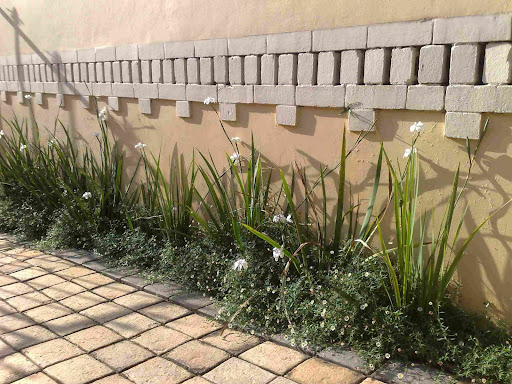Once you've
prepared your earth, the next question to consider is - how do I begin growing/laying my grass? There are several methods to beginning a new lawn:
- Grass Sods (Instant Lawn)
- Plugs
- Seed
1. Instant Lawn
Laying instant turf is the quickest and easiest method to getting a brand new lawn.
Give the area to be planted a good soaking the day before. This will make sure that the sods don't get dried out by the soil that they are being planted on, but will still be dry enough to work on.
If there is going to be any delay between the grass being supplied to you and being planted, then its best to leave it in a cool place for the maximum of a day. Don't water the rolled up sods, as the absence of light/air and presence of water will begin the decomposition process.
Once you are ready for planting, lay a border of grass around the edges. This gives a neater overall look to your new lawn.
Then begin laying your grass in a direction parallel to where it will mainly be viewed from. This will look better in the short term until the grass knits together and the lines between the sods are less evident.
When you are finished, give the lawn a light roll, and a light sprinkling of water to help ensure that the turf has bonded with surface of your soil.
For the next 2 weeks, water the grass every day, giving it just a light sprinkling - it doesn't have deep roots yet, so too much water and it will drop below the roots and be wasted. Thereafter, water every 2-3 days depending on the weather.
Once the grass has established you can give it a light topdressing to even out any unevenness.
2. Plugs
Plugs are a good option when cost is an issue. The plugs can be planted as far apart as necessary. The ideal spacing is 15-20cm.
As for
instant grass above, give the area a good soaking the day before. Start from the furthest point and work backwards. Stand on a plank to distribute your weight evenly and keep from compacting the soil. Use a dibber, or small pointy stick to make the holes in the ground.
Place the plug into the hole, making sure that there is no air pocket below the roots. Carefully press the soil down and towards the newly positioned plug to make sure that it is firmly in place.
When you are finished, you can give the surface a light roll, and a light sprinkling of water.
As for instant turf above, for the next 2 weeks, water the grass every day. Thereafter, water every 2-3 days depending on the weather.
Once the grass has established you can give it a light topdressing to even out any unevenness.
3. Seeds
Planting grass by seed can be the trickiest method, but the satisfaction of watching thousands of little seedlings germinating is sometimes worth it.
The main thing to keep in mind is the fragility of these baby plants in their first few days of life.
Seed suppliers will often give specific directions for planting. Their instructions should be followed as much as is possible.
For best results, spread the seeds evenly by hand for small areas or with a fertiliser spreader for larger areas.
Spread a very thin, fine layer of soil over the top, or give a careful light raking to allow the seeds to be covered by about 5-8mm of soil.
Water once a day, giving the seeds/grass a very fine sprinkling, until the grass reaches about 50mm in height.




















